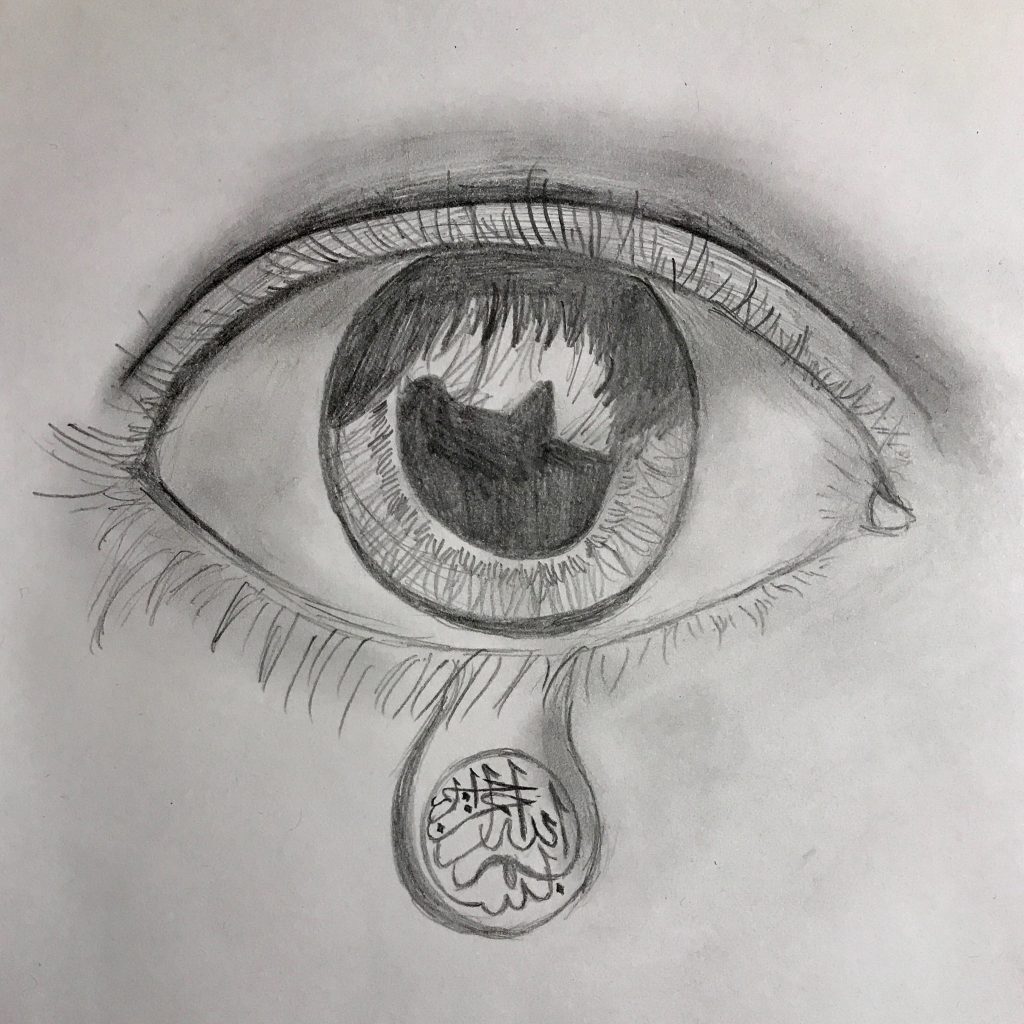Week 3: On Recitations and Tears

This piece was primarily inspired by Al-Ghazali’s The Recitation and Interpretation of the Qur’an, specifically the chapter that we read on the external rules of Quranic recitation. In this piece, Al-Ghazali discusses the role of weeping, even intentionally forcing oneself to weep, while reading the Qur’an as being praiseworthy, as it brings the idea of grief to the mind and makes the individual weeping consider “the threats, warnings, covenants, and promises which are contained in the Qur’an,” thus making an individual consider their own shortcomings in front of God (44). During section that week, we continued to talk about the intertwining of practicing such a ritual and organically feeling the emotions prescribed to that ritual – who says that one needs to come before the other? Perhaps a ritual can be practiced in order to forge the emotional bond between a sacred text and one individual, whereas for another, the emotional response is embodied as a physical response, thus creating the ritual. This grey zone of which aspect of a spiritual connection comes first shows how interrelated the body and the mind are in the context of religion – and that interconnectedness especially comes out in a spiritual act that is as physical of an experience as recitation. This concept is what I sought to bring out in my charcoal visual art piece – I depicted an eye with a single tear, within which is the Bismillah, the phrase recited before each surah of the Qur’an (except for the ninth). This piece connects the repetition of this phrase with the idea of weeping, thus showing the connection that can form between a spiritual idea and a physical ritual.